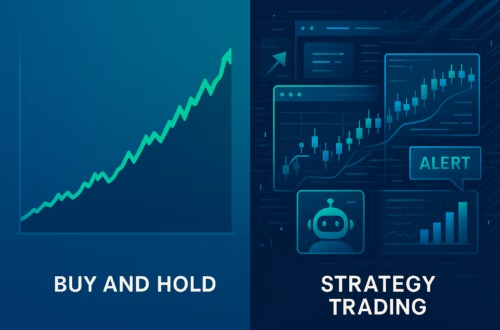Automated trading, also known as algorithmic trading or “algo trading,” has revolutionized the way we approach financial markets. By automating your trading strategies, you can harness the power of technology to execute trades at lightning speed and remove the emotional bias that often plagues manual trading. But with great power comes great responsibility, and successful automated trading requires careful planning and continuous optimization.
Let’s delve into the key factors that can make or break your automated trading journey:
Best Practices for Setting Up Winning Strategies
- Solid Foundation: Before you dive into automation, ensure you have a deep understanding of the market you’re trading. Thoroughly backtest your strategies using historical data to evaluate their performance in different market conditions.
- Clear Rules: Define your trading rules with precision. Specify entry and exit points, stop-loss orders, and profit targets. The more explicit your rules, the smoother your automation will be. If you’re a TradingView user, PickMyTrade can be your secret weapon, seamlessly automating your trades from TradingView directly to Tradovate.
- Risk Management: Never underestimate the importance of risk management. Determine your risk tolerance and set appropriate position sizes. Consider incorporating risk mitigation techniques like stop-loss orders to protect your capital.
- Robust Technology: Invest in reliable trading software and platforms. Ensure your systems can handle the volume and speed required for automated trading without glitches or delays. PickMyTrade ensures a reliable bridge between your TradingView strategies and Tradovate execution, minimizing the risk of technological hiccups.
- Start Small: Begin with a small amount of capital to test your automated strategy in a real-world environment. Gradually increase your exposure as you gain confidence in your system.
Common Pitfalls and How to Steer Clear of Them
- Over-optimization: While backtesting is crucial, avoid over-optimizing your strategy to fit historical data perfectly. Markets change, and an over-optimized strategy might fail when faced with new conditions.
- Ignoring Slippage and Costs: Transaction costs and slippage (the difference between the expected price and the actual execution price) can significantly impact your profitability. Factor them into your strategy calculations.
- Lack of Monitoring: Automated trading doesn’t mean “set it and forget it.” Regularly monitor your system’s performance, watch for anomalies, and make necessary adjustments. With PickMyTrade, you can easily track the execution of your TradingView alerts on Tradovate.
- Chasing the Latest Trend: Beware of strategies that rely solely on the latest market trends. These trends can be fleeting, leading to losses if your strategy isn’t adaptable.
Ongoing Monitoring and Adjustments
The market is constantly evolving, and your automated trading strategy must adapt to stay ahead. Regularly review your strategy’s performance and tweak it based on the latest market data and trends. Be prepared to adjust parameters like entry/exit points or risk management settings as needed.
The Bottom Line
Automated trading can be a powerful tool for generating consistent returns in the financial markets. However, it’s not a get-rich-quick scheme. Success requires a combination of market knowledge, disciplined strategy development, and continuous optimization. By following best practices, avoiding common pitfalls, and leveraging tools like PickMyTrade to streamline your automation, you can increase your chances of achieving your automated trading goals.




I absolutely love your blog and find a lot of your post’s
to be just what I’m looking for. can you offer guest writers
to write content for you personally? I wouldn’t mind producing a post or elaborating
on most of the subjects you write about here.
Again, awesome website!